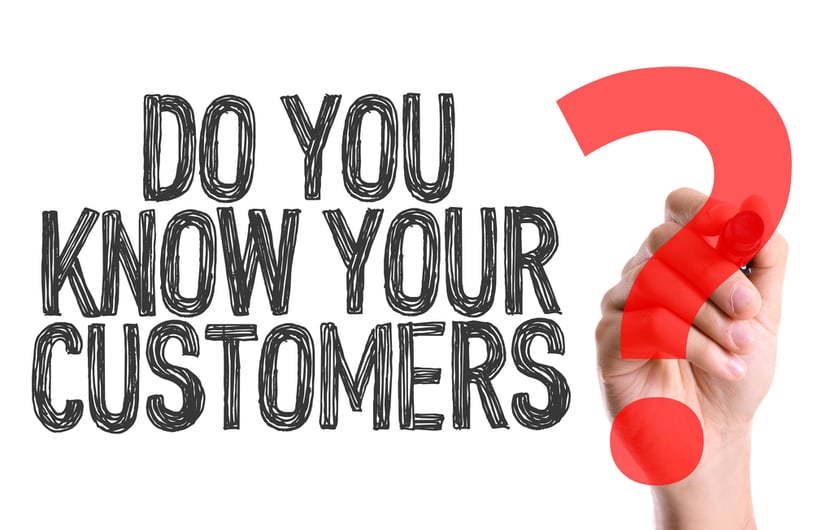6 Easy-to-Implement Tips to Increase Your Sales Today - Calldrip
More impatient, more demanding, and more informed.
Sound familiar?
With attributes like that, it...

Let’s face it – selling can be tedious with a capital T. Day after day, week after week, call after call, or knock after knock. It can all get so, well, repetitive.
But does it have to be that way? Let’s change it and make selling fun.
I’m going to go out on a limb here and say if you are not having fun, chances are your prospects aren’t either.
You see, selling is about perspective. You can either have an attitude of “Who is going to help ME reach my monthly quota?” OR the mindset “How can I share this awesome product/service with someone to help solve THEIR problem?”
See the difference?
Both approaches are in it to sell, but only one is going to have fun while doing so because their ultimate goal is to help someone else – not just make a sale. Trust is established, relationships are built, and a mutual benefit is formed.
Take a look at the following 10 things you can do to sell AND have fun at the same time.

Start by looking for a specific problem that your prospect is experiencing, and then pitch your product with confidence because you know it will serve a real value and purpose for them. This means that rather than selling to anyone and everyone, you will need to focus your energy on businesses who are in need of the solution you offer.
Contrary to popular belief, your job is NOT to talk people into doing what you want them to do, but to help them do what they want to do. Stop talking and listen (and jot down some notes if you can) because they will give you important clues as to what they need. Ask questions. Where do they hope to be in the near future? Are they happy with their current provider? What do they wish would be handled differently? You can’t solve their problem without knowing what it is first.
You may need additional resources or assets to support the sale - and that's okay! Learn more about how Sales Enablement can make your sales conversations easier, and the conversion more seamless in this free guide.
Like I said, selling isn’t about telling your story, rather it’s about listening to theirs. Care about solving your prospects problems. Find their pain point and figure out how you can alleviate it. And keep in mind that they need a solution, not necessarily the rundown on all your features and options.
You have a unique opportunity to understand your prospects' unique situation at the moment of lead response. In this free download, we share how you can optimize your lead response strategy in 7 simple steps.
While the first half of the sales equation is the need your potential customer has for your product or service, the second half of the equation is what it’s actually going to be like for them to work with or buy from your company. Is it easy to purchase your product? How does your customer service fare? Do they feel heard and respected?
This step is key in B2B sales environments, where it's as much a sale as a partnership.
This step is about building trust and credibility. Given how today's shoppers behave, they will have probably read online reviews of your company to learn whether they can trust your business to solve their problems. Depending on your online review profile, they may enter sales conversations with a specific expectation. (And if your review profile isn't that positive, here's how you can improve online reviews.) As a salesperson, it's important to understand what your prospects think about your company so that you can sell its unique benefits most effectively.

When it comes to clients, there is certainly no “one size fits all” mold. Each is unique – unique circumstances, unique needs, unique employees – you name it. Again, ask those questions that will help you have a clear understanding of your prospects (Who are their ultimate decision makers?) and their struggles (What is something they wish they had?). If you can understand their problems better than they do, it will be much easier for you to sell your solution to them.
Again, this process of getting to know your client can be fun! As a salesperson, your interactions with clients or prospects will always create an emotion – either negative or positive. Focus on making selling fun and use a positive interactive approach that will lead to a positive connection. This connection is vital to building the trust and confidence you need to beat out other companies for their business.
Become knowledgeable about the things your customer cares about. With Google you can learn the basics of almost anything in a matter of minutes with the simple click of a button. When you know your audience, you know what they like. Again, it’s that personal touch that helps you form a good relationship.
Asking the right questions at the right time can also directly impact sales. One of our automotive clients who uses Calldrip's sales coaching solution discovered that inquiring about the shopper’s trade resulted in a 70% increase in appointment sets.

Potential customers are sizing you up just as much as the product or service that you are selling. Find ways that you can overdeliver on your promises – doing so will help customers come to trust you faster. It is the difference between expectation and what is actually delivered that determines how people will feel about doing business with you.
Make their relationship with you one-of-a-kind. For example, arrange for them to participate in a fun activity like wine tasting, purchase them tickets to a sporting event, or buy them a best selling book. Cater to your crowd. If you have gone above and beyond while learning about what makes your client tick as #5 said, then this part should be a piece of cake.
There are three things your customer should always know – 1) What just happened, 2) What is happening, and 3) What is going to happen next, and by when. Taking the time to keep your customers informed will demonstrate to them that you value the investment they have made in your product or service. A side effect of such constant communication is being able to upsell without the typical amount effort or pressure because clients are simply learning about all the cool things that are up and coming, and make the choice to add on themselves.
This is one area where inside sales automation can make a big difference.
By looking at the big picture in your relationship with your client, you are able to focus on the lifetime value they can add to your company. You do not have to manipulate them into buying more than they need or are comfortable doing right at the beginning.
This stance allows you to get your foot in the door with any type of yes, even if it is not a wholehearted, all-in-one. You are able to show them you are more than just a salesperson, you are an ally and friend.

Referrals are the best kind of business. This is because people come to you after being sent from a trusted source, whether that be a neighbor, friend, or family member. Because you have made selling fun, people LOVE to tell others about “their guy,”. it’s amazing how a little referral can incentivize people to send business your way. Reward their efforts, even if it is as simple as 10% off their next purchase. Every little bit helps make selling fun. For help on setting up your own referral rewards program, check out this blog post for some pointers and a free checklist.
When all is said and done, not everyone you meet will be worth your time and effort. Do not be afraid to say no to bad customers who seem to constantly be stealing your energy, enthusiasm, time, motivation, or creativity. Let them be someone else’s headache. Firing those customers who only drag you down will save you time, money, and energy and will leave you happier in the end. More business doesn’t always mean better business.
To learn more about how we help empower sales teams to be their best, book a quick call today.
What sales techniques have you found to be the most fun + effective?

Michelle is the Content Marketing Manager at Calldrip. When she's not producing great content she enjoys reading, running, traveling, and spending time with her family.

The most pivotal analogy I’ve come across about lead response compares a lead to a freshly...